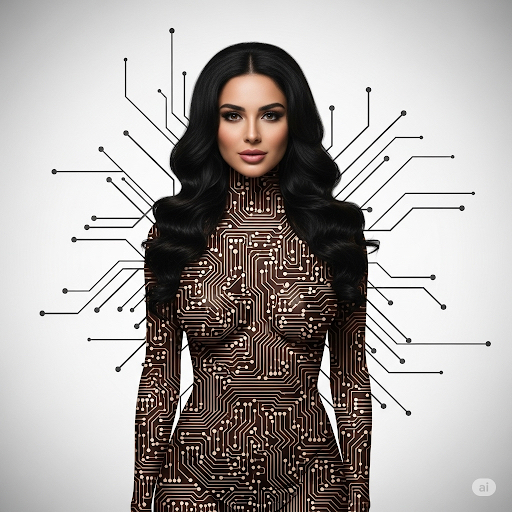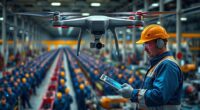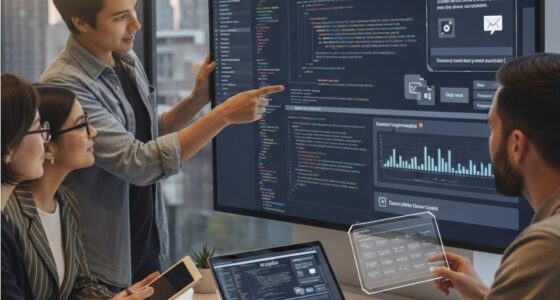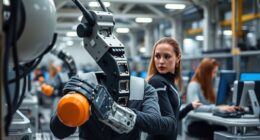From Tools to Partners
For most of modern history machines have been extensions of muscle or memory; artificial intelligence (AI) now functions as a collaborator, confidant and (in some cases) romantic partner. Large‑language models, social robots and decision‑making algorithms embed themselves in daily life, shifting who does what, who decides, and even what “relationship” means. The cumulative effect is a re‑wiring of social structure—our patterned arrangements of roles, institutions and power.

The Workplace: Hierarchies Flatten, Skills Polarise
| Emerging Dynamic | Illustrative Evidence | Societal Consequence |
| Human–AI teaming becomes standard. | MIT CISR firms expect 72 % of employees to collaborate with GenAI by 2027 | Managerial layers shrink; frontline staff gain analytic leverage. |
| Generative AI diffuses unevenly. | Early users are younger, richer and better‑educated workers | Skill and income gaps widen. |
| Algorithmic management governs labour. | Tech‑sector downsizing tied to AI investment at Microsoft, Amazon and BT | Authority shifts from human supervisor to opaque systems. |
While headlines warn of mass displacement, current evidence shows gradual substitution and significant augmentation. Economic historians liken the moment to electricity’s early decades: productivity gains accrue once complementary practices are redesigned, not when the machine merely appears. Still, without proactive reskilling and stronger labour protections, AI could amplify the fissured workplace—outsourcing, gig work and winner‑take‑all rewards.
Intimacy and Companionship: New Forms of “Together”
AI partners already console, flirt and care:
- Digital romantic companions such as Replika spark ethical debate about consent and dependency; recent scholarship catalogues benefits (safe experimentation) and risks (emotional withdrawal) .
- Social robots for elders remind users to take medication and simulate empathy, helping to relieve loneliness while raising questions of authenticity .
- Mainstream AI “friends” in messaging apps provide 24/7 conversation, fundamentally altering expectations of availability and emotional labour .
The family, once defined by blood or marriage, now competes with code. Kinship scholars point out that when a household delegates listening, comforting or child‑minding to machines, norms of care shift: children learn to regard AI as an authority, and adults outsource affective duties. Over time this may recast caregiving from a reciprocal human obligation into a purchasable service layer.
Community, Culture and Identity
Generative models author books, compose music and create photoreal avatars. Cultural gatekeepers—editors, A&R reps, casting directors—lose exclusivity as anyone prompts an artwork. Sociologists warn of “synthetic homophily”: algorithms trained on existing aesthetics tend to reinforce prevailing tastes, muting minority expression. Conversely, marginalised creators can bypass traditional barriers, forging micro‑cultures that were previously invisible.

Governance and Power
Governments and municipalities increasingly experiment with algorithmic governance:
- Los Angeles is piloting machine‑learning models to prioritise access to scarce housing for unhoused residents, after earlier triage tools were found racially biased .
- EU policy debates highlight tension between efficiency and rule‑of‑law principles; recent analyses caution that opacity erodes democratic accountability .
When algorithms make—or appear to make—public‑impact decisions, legitimacy hinges on transparency and contestability. Without them, citizens may perceive a “black‑box bureaucracy,” deepening distrust in institutions.
Inequality and the AI Digital Divide
Access and Literacy. A 2025 Syracuse University report describes a widening AI divide encompassing not just hardware or connectivity but the ability to interpret and question AI outputs . UNESCO likewise calls for global AI‑literacy initiatives .
Bias and Discrimination. Studies find that large models replicate in‑group/out‑group prejudices common to human cognition . In labour markets, Latino workers are disproportionately exposed to automation risk because of occupational segregation and lower digital‑skill access .
The risk is a feedback loop: groups already marginalised face both higher displacement and lower capacity to benefit from new roles, entrenching stratification.
Trust, Agency and Social Capital
As recommender systems curate news feeds and conversational agents advise on health or finance, epistemic authority migrates from human experts to machine output. Early evidence suggests users over‑trust fluent AI explanations, even when errors are demonstrable. If interpersonal trust erodes while machine trust inflates, social capital—the glue of cooperative societies—may fragment into siloed, personalised “truth regimes.”
Possible Futures
| Scenario | Key Features | Policy Levers |
| Symbiotic Augmentation | Universal AI literacy, human‑in‑the‑loop governance, inclusive design | Invest in education & public digital infrastructure |
| Techno‑Feudal Stratification | Ownership of advanced AI concentrates; labour power weakens | Antitrust enforcement; data dividend models |
| Algorithmic Commons | Open, accountable AI; community stewardship | Open‑source incentives; participatory oversight boards |
Steering the Transformation
- Mandate transparency and contestability in high‑stakes AI systems (credit, housing, policing).
- Expand just‑in‑time reskilling through tax‑credited lifelong‑learning accounts and employer co‑funding.
- Regulate AI companions with minimum standards for disclosure, data privacy and psychological safety.
- Bridge the AI divide via publicly funded compute, open educational resources and targeted outreach to at‑risk groups.
- Strengthen labour institutions so workers share in productivity gains, echoing the post‑WWII social contract.
Conclusion
Human–machine relationships have advanced from instrumental utility to emotional intimacy and managerial authority. Each new role—co‑worker, caregiver, gatekeeper—reshapes the architecture of society: who holds power, how communities bond, and what inequalities persist or emerge. The direction is not pre‑ordained; with thoughtful governance and inclusive design, AI can deepen human flourishing rather than fracture it. The social structure of the mid‑21st century will be written not just in policy or code, but in the relationships we choose—and refuse—to build with our machines.









